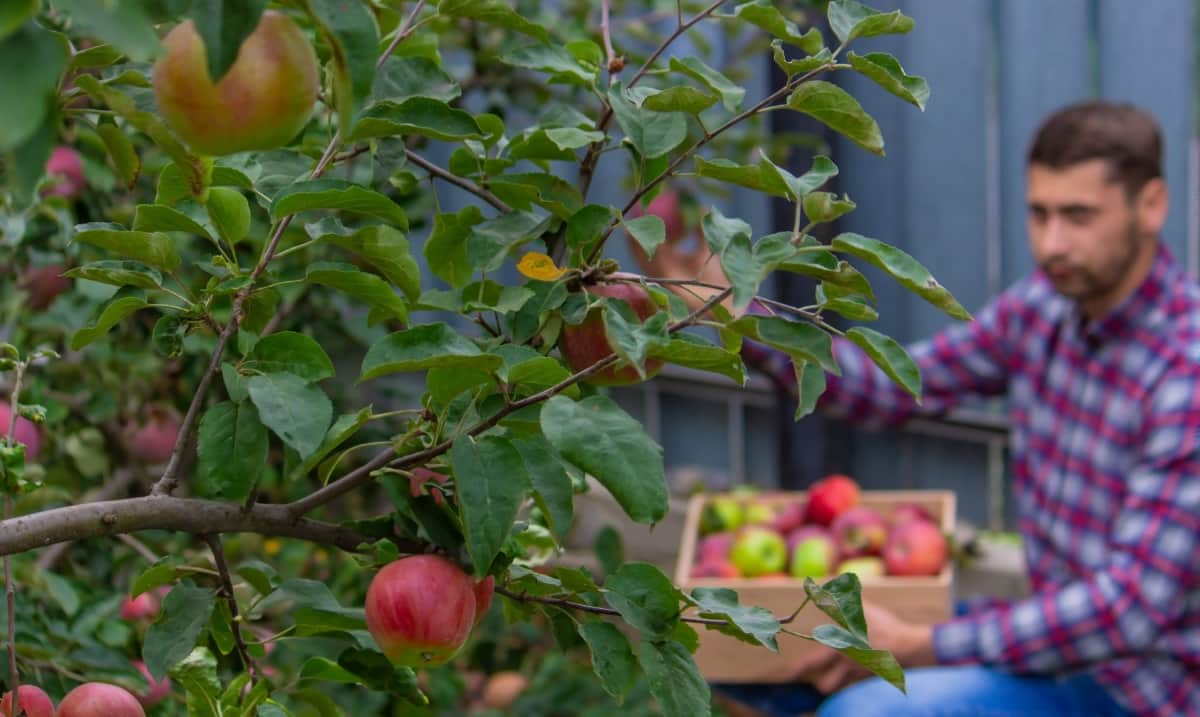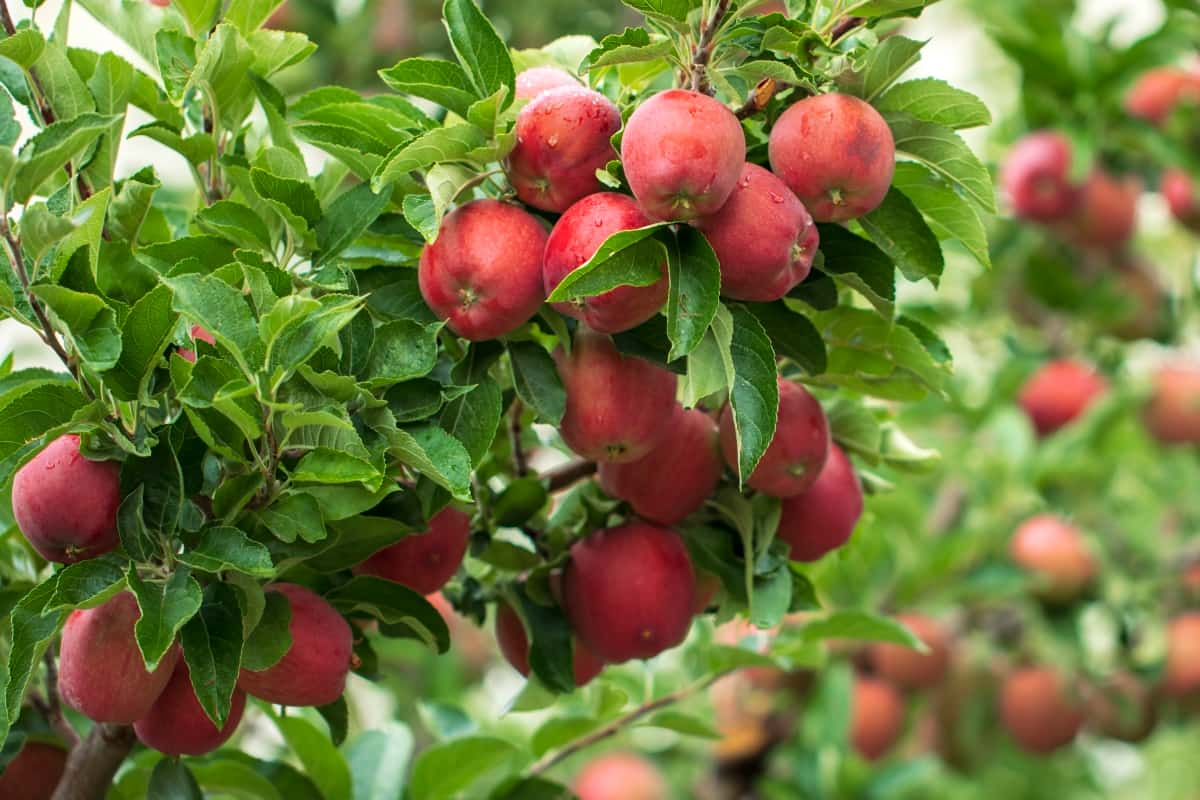Achieving bigger Apple fruits requires a holistic approach that encompasses proper pruning techniques, effective thinning methods, appropriate irrigation and fertilization practices, and vigilant pest and disease management efforts. By understanding the factors affecting Apple fruit size and implementing these strategies accordingly in your orchard maintenance routine year after year, you can enjoy the satisfaction of harvesting larger and better Apples.

How to Increase Apple Fruit Size
Optimizing Soil Nutrients for Larger Apple Fruits
Optimizing soil nutrients is crucial for producing larger Apple fruits in your orchard. By providing the right balance of essential elements, you can ensure that your trees have everything they need to grow big and healthy. One key nutrient for Apple fruit size is nitrogen. This element plays a vital role in promoting leaf growth and overall tree vigor. In addition to nitrogen, other macronutrients like phosphorus and potassium are also important for Apple fruit development.
Phosphorus aids in root development, while potassium helps regulate water movement and improves fruit quality. Micronutrients such as iron, zinc, manganese, copper, boron, and molybdenum are equally important for optimal Apple growth. These trace elements may be required only in small quantities but play a significant role in various metabolic processes within the plant.
Maximizing Sunlight Exposure for Bigger and Better Apple Fruits
When it comes to growing Apple trees, maximizing sunlight exposure is crucial for achieving bigger and better fruits. To ensure maximum sunlight exposure, it’s important to plant your Apple trees in a location where they will get full sun for at least six to eight hours per day. Proper tree spacing is also essential for maximizing sunlight penetration.
By giving each tree enough space to grow and spread its branches, you can prevent overcrowding and allow sunlight to reach all parts of the tree canopy evenly. Regular pruning plays a significant role in optimizing sunlight exposure as well. Removing excess branches and thinning out dense foliage helps improve air circulation within the canopy while allowing more sunlight to penetrate through.
The Role of Pruning in Increasing Apple Fruit Size
Pruning plays a vital role in increasing Apple fruit size. By selectively removing certain branches, you can direct the tree’s energy toward producing larger and higher-quality fruits. Pruning helps to improve air circulation, allowing sunlight to penetrate deep into the tree. This exposure to sunlight is crucial for photosynthesis and fruit development. Additionally, proper spacing between branches ensures that each Apple receives an adequate amount of light.
Furthermore, pruning helps maintain a balanced ratio between vegetative growth and fruit production. By removing excessive shoots, more nutrients are directed toward developing larger fruits rather than supporting unnecessary foliage. By keeping it at a manageable height and width, you can easily access all parts during harvest time without damaging any branches or causing stress to the tree.
Irrigation Techniques for Larger Apple Fruits
When it comes to growing larger Apple fruits, irrigation techniques play a crucial role. Providing the right amount of water at the right time is essential for optimal fruit development. First and foremost, it’s important to ensure that your Apple trees receive an adequate water supply throughout the growing season. This means monitoring soil moisture levels regularly and adjusting irrigation accordingly. Too much or too little water can have negative effects on fruit size and quality.
In case you missed it: Top 20 Steps To Boost Your Apple Fruit Yield: Fruit Size Increase Tips, and Ideas

One effective technique is drip irrigation, which delivers water directly to the root zone of each tree. Another technique is mulching around the base of Apple trees. Mulch conserve soil moisture by reducing evaporation, moderates soil temperature fluctuations, and suppresses weed growth. Organic mulches are ideal as they break down over time, adding nutrients to the soil.
Fertilizer Application for Bigger Apple Fruits
Proper fertilization is key to achieving larger and healthier Apple fruits in your orchard. By providing the right nutrients at the right time, you can give your Apple trees the boost they need to produce bigger fruits. Apply a balanced fertilizer when the buds are just beginning to swell. This will provide a nutrient-rich foundation for growth throughout the season. Consider using organic fertilizers that release nutrients slowly over time. These types of fertilizers promote long-term soil health and reduce the risk of nutrient leaching.
Remember that more is not always better when it comes to fertilizing Apple trees. Over-fertilization can cause excessive vegetative growth at the expense of fruit development. Follow recommended dosage rates and monitor your trees’ response closely. In addition to timing and dosage, consider the specific nutrient needs of Apple trees. They require a balanced blend of nitrogen, phosphorus, and potassium, as well as micronutrients like magnesium, calcium, iron, and zinc.
Apple Fruit Thinning: When, How, and Why to Thin Fruits for Optimal Growth
When it comes to growing Apple trees, one of the key factors in achieving larger Apple fruit size is proper fruit thinning. Thinning fruits simply means removing some of the developing Apples from the tree. This process allows the remaining fruits to receive more nutrients and energy from the tree, resulting in bigger and higher-quality Apples at harvest time. It’s recommended to start thinning about 4-6 weeks after petal fall.
At this stage, you can easily identify which fruits are well-formed and healthy versus those that may be misshapen or damaged. To properly thin your Apple fruits, gently twist or snap off the undesired ones using your thumb and forefinger. Be sure to leave enough space between each remaining fruit so they have room to grow without touching each other. By reducing excessive fruit load through thinning, you encourage consistent production cycles.
Monitoring and Controlling Pests and Diseases for Larger Apple Fruits
Pests and diseases can wreak havoc on Apple trees, stunting growth and reducing fruit size. That’s why it’s crucial to monitor and control these issues in your orchard. Regular scouting is essential to catch any signs of infestation or disease early on. One way to monitor pests is by setting up sticky traps throughout the orchard. These traps will attract insects, giving you an idea of which pests are present and their population levels.
By knowing what pests are around, you can take appropriate action to control them. Integrated pest management practices involve cultural practices such as maintaining good sanitation in the orchard, removing fallen fruits, and pruning infected branches. In addition to monitoring pests, it’s also important to keep a close eye out for signs of diseases like Apple scab and powdery mildew. Regularly inspect leaves, branches, and fruits for any abnormalities or discoloration.
Harvesting Apple Fruits at the Right Time: The Importance of Timing for Maximizing Fruit Size and Quality
When it comes to harvesting Apple fruits, timing is everything. Picking the Apples at the right time is crucial for maximizing both their size and quality. Look out for changes in color. As Apples ripen, they go through a series of color transformations. The fruit will gradually change from green to its characteristic hue – whether that be red, yellow, or any other shade, depending on the variety. Keep an eye on this color progression, as it can indicate when the fruit is nearing maturity.
In case you missed it: How to Grow Apples for Beginners: A Guide to Planting to Harvesting

Another important aspect to consider is firmness. If it feels too soft or mushy, then it’s likely overripe and should have been harvested earlier. On the other hand, if it feels excessively firm, give it some more time before picking. Furthermore, pay attention to the seed color and texture inside the Apple. As Apples mature, their seeds typically turn brown rather than white or pale colored like those found in unripe fruits.
Temperature Management for Bigger Apple Fruits
To ensure optimal fruit size, it is important to manage the temperature effectively in your orchard. During the growing season, Apples thrive in moderate temperatures ranging from 15 to 23°C. Extreme heat or cold can adversely affect fruit development. High temperatures can cause sunburn on the fruits, while frost and freezing temperatures can damage tender buds and young fruits.
To protect your Apple trees from extreme temperatures, consider implementing some strategies. One effective method is mulching around the base of the tree with organic materials like straw or wood chips. This helps regulate soil temperature by insulating roots against extreme heat or cold. Another technique is using shade cloth or reflective covers to shield Apple trees from excessive sunlight during peak summer months. This reduces stress on the plants and prevents sunscald on developing fruits.
Apple Tree Maintenance and Training for Increased Fruit Size
Proper maintenance and training of Apple trees play a crucial role in achieving larger fruit size. By implementing the right techniques, you can encourage healthy growth and maximize fruit production. Regular pruning is essential to maintain an open canopy that allows sunlight to penetrate the tree’s inner branches. This not only promotes better photosynthesis but also ensures uniform fruit development throughout the tree.
Pruning also helps remove diseased or damaged branches, improving overall tree health. When it comes to training your Apple trees, proper support systems like trellises or stakes are necessary to prevent branch breakage under heavy fruit loads. Additionally, regularly thinning out excess fruits during the early stages of development allows energy resources to be distributed more effectively among remaining fruits – resulting in larger-sized Apples.
In case you missed it: How to Control Pests and Diseases in Apple Trees: Causes, Symptoms, Chemical, and Biological Management

Regular soil testing should be conducted to ensure optimal nutrient uptake. Proper irrigation techniques such as drip or sprinkler systems help provide consistent moisture levels without overwatering – a key factor in preventing cracking or splitting of fruits. Pest control measures need to be implemented promptly using organic methods whenever possible. Maintaining a clean orchard floor by removing fallen leaves and debris reduces pest habitat and prevents disease spread.
Conclusion
Increasing the size of Apple fruits in your orchard requires a combination of various factors working together. By optimizing soil nutrients and ensuring proper sunlight exposure, you can provide the ideal conditions for Apple trees to produce larger fruits. By implementing these strategies consistently in your orchard management practices, you can enhance not only the size but also the overall quality of your Apple harvests.
Remember that patience is key; it may take several seasons before you see significant improvements in fruit size. With dedication and careful attention to detail, your efforts will be rewarded with bountiful yields of deliciously large Apples year after year.
- How to Grow Tomatoes Organically at Home: A Comprehensive Guide
- Organic Gardening on a Budget: Low-Cost Methods and Materials
- Gongura Seed Germination and Planting Methods
- Cabbage Seed Germination and Selection
- Broccoli Seed Germination and Selection
- Asparagus Seed Germination and Variety Selection
- Seasonal Flower Gardening: Best Practices for Spring, Summer, Fall, and Winter
- How to Grow Hibiscus from Flower
- Plantation Ideas for Home Decoration: A Beginners Guide